Assignment #29: Think about what you would like to present in a class exhibition and blog about it.
Considering the extent I'd like to go for my final project, if there were a class exhibition, I'd love to show the results, even if it is only a few volunteers at this stage. While I like most of the other work I've completed for this class this semester, I feel like my final project is able to delve much deeper in concept and idea, rather than just an exploration of a medium.
At this point, there is not much I can share, but the preparation I posted here: http://angienmnf.blogspot.com/2012/12/final-project-progress.html
Angie's New Media New Forms Blog
Wednesday, December 5, 2012
Sound Artist: Susan Philipsz
Assignment #28: Research 1 or (if you signed up for 3 credit points) 2 artists who have used sound in their work. Observe how they used it; how obvious that component is; and how creative they were in their approach. Blog about it.
Susan Philipsz is a Scottish artist-musician who is best known for her sound installations. For most of her sound installations, she sings a cappella covers of songs played over a public address system in an art space or public space (or both).
Philipsz's approach to sound art makes me question what I have always questioned in sound art...what is the distinction between sound art and music? Even in the music industry, music videos and live performances are the visual and the sound coming together. The only difference I really see is where the sound is played.
For example, if organized sound is played in a concert hall, it seems to be music because that is what is associated with that specific space. That space is built to amplify sound in a particular way, with or without amplification technology and equipment. However, in a gallery space, we associate visual art, whether in 2D or 3D, still or in motion - sound art seems to touch upon that questioning of a space that is usually reserved for visuals.
The above video, known as "Lowlands" is a culmination of three versions of a 16th century Scottish lament, played under three bridges in Glasgow over the same river, River Clyde. This piece won her the 2010 Turner Prize (a first time achievement for sound art since the Turner Prize is usually given to a visual artist).
The space here is public and accessible. Because it is not a live performance, it would be odd for any of us to go to a bridge to listen to music. I think re-positioning where we expect certain sounds or music to be is what makes sound art, such as "Lowlands" so interesting, and also it brings up questions to why there are places and times that sounds/music are appropriate anyways!
Susan Philipsz is a Scottish artist-musician who is best known for her sound installations. For most of her sound installations, she sings a cappella covers of songs played over a public address system in an art space or public space (or both).
Philipsz's approach to sound art makes me question what I have always questioned in sound art...what is the distinction between sound art and music? Even in the music industry, music videos and live performances are the visual and the sound coming together. The only difference I really see is where the sound is played.
For example, if organized sound is played in a concert hall, it seems to be music because that is what is associated with that specific space. That space is built to amplify sound in a particular way, with or without amplification technology and equipment. However, in a gallery space, we associate visual art, whether in 2D or 3D, still or in motion - sound art seems to touch upon that questioning of a space that is usually reserved for visuals.
The above video, known as "Lowlands" is a culmination of three versions of a 16th century Scottish lament, played under three bridges in Glasgow over the same river, River Clyde. This piece won her the 2010 Turner Prize (a first time achievement for sound art since the Turner Prize is usually given to a visual artist).
The space here is public and accessible. Because it is not a live performance, it would be odd for any of us to go to a bridge to listen to music. I think re-positioning where we expect certain sounds or music to be is what makes sound art, such as "Lowlands" so interesting, and also it brings up questions to why there are places and times that sounds/music are appropriate anyways!
Electronics/Coding/Software Artist: Jason Salavon
Assignment #27: Research 1 or (if you signed up for 3 credit points) 2 artists who have used electronics / coding / software in their work. Observe how they used it; how obvious that component is; and how creative they were in their approach. Blog about it.








Jason Salavon is an American artist that works with a custom computer software to re-evaluate and re-configure various data and mediums into another form. Salavon collects pre-existing images and overlays and "averages" them to create "visualamalgamations." He also recomposes statistical data into visual images.
From an aesthetic stand point, it's hard to identify that his artwork is software-based. It looks very much like photography manipulation or even paintings. However, the software aspect is much more appealing on a conceptual level - finding an average or mean of images seems sort of ridiculous. Collecting images and creating a mega image that takes components of each culminates in an interesting dialogue of how similar things and people can be, and how popular culture moves (or doesn't) in time.




The following 4 images are from yearbook photos collected from Salavon's history. The first two are from the Class of 1988 and the second two are from the Class of 1967. The images are the end results of inputting all the images for a yearbook from a particular year into Salavon's custom software that applies an averaging process.




The four images below follow a similar process of averaging the Playboy centerfolds from each decade (60's, 70's, 80's, and 90's from left to right). In fact, at one point, Salavon's website was in a higher position than Playboy's own website in a Google search for "Playboy."
[His custom computer software is written in C on Unix-based SGI's using Paul Haeberli's SGI file format.]
Response to Workshop: Intro to Electronics for Art Teachers/Artists
Assignment #26: Share your experiences, thoughts, notes, learning about the workshop with Deren - Intro to Electronics for Art Teachers/Artists.
In this class, along with other art education classes, we've talked a lot about integrating new technologies into our classrooms as teachers in the future. We have talked about how to use the internet as a resource, or how to scan and print and copy as a creative outlet, or how to take traditional art mediums and use their technological equivalents to make art.
However, we weren't able to actually combine traditional and technological together the way we did during our workshop. We took traditional materials and added something technological, rather than finding a way to separate the two.
For example, our Drawdio pencils didn't enable us draw in a virtual space like a tablet does, but rather it focuses on the normalcy of a pencil to create physical graphite lines, and then adds another dimension to it - the audio.
Another sample, origami has been done for over four hundred years, and instead of say, letting a machine make origami for us, we still focused on the traditional folding aspect (though with directions on an iPhone or a directions sheet), and THEN added the technological dimension of motion.
I think that both of those projects are an excellent way of bringing the traditional with the technological, rather than using one to replace the other.
In this class, along with other art education classes, we've talked a lot about integrating new technologies into our classrooms as teachers in the future. We have talked about how to use the internet as a resource, or how to scan and print and copy as a creative outlet, or how to take traditional art mediums and use their technological equivalents to make art.
However, we weren't able to actually combine traditional and technological together the way we did during our workshop. We took traditional materials and added something technological, rather than finding a way to separate the two.
For example, our Drawdio pencils didn't enable us draw in a virtual space like a tablet does, but rather it focuses on the normalcy of a pencil to create physical graphite lines, and then adds another dimension to it - the audio.
Another sample, origami has been done for over four hundred years, and instead of say, letting a machine make origami for us, we still focused on the traditional folding aspect (though with directions on an iPhone or a directions sheet), and THEN added the technological dimension of motion.
I think that both of those projects are an excellent way of bringing the traditional with the technological, rather than using one to replace the other.
Video as a Creative Outlet
Assignment #25: Revisit our video class and your notes about it. Come up with 2 ideas about how you would like to introduce video through lesson plans in an art class (age: your choice); alternatively: 1 or 2 paragraphs describing how you would like to continue to work with video creatively; alternatively: what you have been able to learn about video as a creative material.
Since I am particularly interested in a visual narrative, video is, in some way or another, the epitome of visual narrative. However, I'm interested in exploring with video in a similar way I explore photography sometimes. Instead of being over focused on having a specific story line, or having a specific subject, I want to use video to collect visual aesthetics, such as the floating plastic bag in the movie, American Beauty.
This brings about quite an interesting debate about photography and video to begin with, especially in the digital age (accessibility to instant review and "unlimited" storage) - documentary vs. art.
Just a glance at YouTube, anybody would be overwhelmed with the range of material on there - differences and similarities in topics, equipment, editing, style, sound, etc. There are music videos, video blogs (vlogging), short films, advertisements, how-to's, etc. Many of these videos are filmed in an approach that can be understood as documentary-like. "Here's what I want to show and that's what I show."
However, many people think of anything fancier than pressing the record button as too difficult or requiring a lot of skill. But, in reality, good videos (not to include blockbuster movies) don't necessarily require anything fancy. In video, you can focus on getting the right frames aesthetically or you can focus on the editing, which opens up a huge territory.
I'd like to revisit the "getting the right frames aesthetically" approach. Instead of all of the pre- and post- video editing and preparation I want to focus on the actual filming itself, by filming whatever I think evokes feelings/emotions or is aesthetically pleasing - whether it's something with a lot of movement or motion, or something that actually stays still and the camera does the moving (from even just natural breathing or intentionally). I think that there's beauty in video in just that simplicity, and that's what I'd like to explore.
Since I am particularly interested in a visual narrative, video is, in some way or another, the epitome of visual narrative. However, I'm interested in exploring with video in a similar way I explore photography sometimes. Instead of being over focused on having a specific story line, or having a specific subject, I want to use video to collect visual aesthetics, such as the floating plastic bag in the movie, American Beauty.
This brings about quite an interesting debate about photography and video to begin with, especially in the digital age (accessibility to instant review and "unlimited" storage) - documentary vs. art.
Just a glance at YouTube, anybody would be overwhelmed with the range of material on there - differences and similarities in topics, equipment, editing, style, sound, etc. There are music videos, video blogs (vlogging), short films, advertisements, how-to's, etc. Many of these videos are filmed in an approach that can be understood as documentary-like. "Here's what I want to show and that's what I show."
However, many people think of anything fancier than pressing the record button as too difficult or requiring a lot of skill. But, in reality, good videos (not to include blockbuster movies) don't necessarily require anything fancy. In video, you can focus on getting the right frames aesthetically or you can focus on the editing, which opens up a huge territory.
I'd like to revisit the "getting the right frames aesthetically" approach. Instead of all of the pre- and post- video editing and preparation I want to focus on the actual filming itself, by filming whatever I think evokes feelings/emotions or is aesthetically pleasing - whether it's something with a lot of movement or motion, or something that actually stays still and the camera does the moving (from even just natural breathing or intentionally). I think that there's beauty in video in just that simplicity, and that's what I'd like to explore.
Final Project: Progress
Assignment #24: Further define and work on your final project. Due date: Dec 10. Add a paragraph about it's current state on your blog.
To "explain" my project, I've copied and pasted a public ad I put on Craigslist, CouchSurfing, TC's Classified, among other online communities.
-----------------------------------------------------------------------
Are you of mixed race or culture (2 or more)?
Have you had a relationship (current or past) with somebody of mixed race or another race than your own?
Do you have children of mixed race or another race than your own?
When asked, "Where are you from?" do you require more than a few words?
I WANT TO HEAR YOUR STORY! (AND TAKE YOUR PHOTOGRAPH, TOO)
ABOUT THE PROJECT:
I am a graduate (art and art education) student working on an art project that involves all the questions above and more. I am using the initial process for a small class assignment, but beyond that, it is out of personal interest. Since this is at the very beginning stage, I have no specific thesis or end result. I feel as if this will be reached through the "research" process. I am looking for volunteers who would like to engage in a short conversation/dialogue and then have a few photographs taken that will later be used with drawing - this should take approximately 1 hour.
PARENTS OF BABIES/CHILDREN (0-18 years old):
I am especially interested if you would be willing to share your experiences as a parent - your concerns, challenges, positive experiences - of having or adopting children of different or mixed race/cultures. I will compensate extra accordingly (see below).
DATES/TIME:
Phase I: 12/06/2012 - 12/10/2012; By appointment, flexible
LOCATION:
Midtown (local Starbucks for interview, apartment studio for photograph)
COMPENSATION:
I am working with a $0 budget here, so I would appreciate volunteers without compensation, but at the very least, due to the immediacy of volunteers needed, I can offer $30, along with any reasonable travel reimbursement, and a drink. Referrals: For each person (that somehow "qualifies") that you can bring along, I will also compensate you with an additional $10 (or $20 for each child/baby).
CONTACT:
Email above! Please send me a couple of sentences about yourself and why you want to get involved, along with some times you'll be available from 12/06/2012 to 12/10/2012.
To "explain" my project, I've copied and pasted a public ad I put on Craigslist, CouchSurfing, TC's Classified, among other online communities.
-----------------------------------------------------------------------
Are you of mixed race or culture (2 or more)?
Have you had a relationship (current or past) with somebody of mixed race or another race than your own?
Do you have children of mixed race or another race than your own?
When asked, "Where are you from?" do you require more than a few words?
I WANT TO HEAR YOUR STORY! (AND TAKE YOUR PHOTOGRAPH, TOO)
ABOUT THE PROJECT:
I am a graduate (art and art education) student working on an art project that involves all the questions above and more. I am using the initial process for a small class assignment, but beyond that, it is out of personal interest. Since this is at the very beginning stage, I have no specific thesis or end result. I feel as if this will be reached through the "research" process. I am looking for volunteers who would like to engage in a short conversation/dialogue and then have a few photographs taken that will later be used with drawing - this should take approximately 1 hour.
PARENTS OF BABIES/CHILDREN (0-18 years old):
I am especially interested if you would be willing to share your experiences as a parent - your concerns, challenges, positive experiences - of having or adopting children of different or mixed race/cultures. I will compensate extra accordingly (see below).
DATES/TIME:
Phase I: 12/06/2012 - 12/10/2012; By appointment, flexible
LOCATION:
Midtown (local Starbucks for interview, apartment studio for photograph)
COMPENSATION:
I am working with a $0 budget here, so I would appreciate volunteers without compensation, but at the very least, due to the immediacy of volunteers needed, I can offer $30, along with any reasonable travel reimbursement, and a drink. Referrals: For each person (that somehow "qualifies") that you can bring along, I will also compensate you with an additional $10 (or $20 for each child/baby).
CONTACT:
Email above! Please send me a couple of sentences about yourself and why you want to get involved, along with some times you'll be available from 12/06/2012 to 12/10/2012.
Wednesday, November 14, 2012
3D Modeling with Rhino
Below is a screenshot of my Rhino buildup of the Roberto Clemente Bridge in Pittsburgh, and then below that, a rendering. I would be interested in finding out if something like that could be printed using a 3D printer.
Video "Artist": Richard Linklater
Assignment #24: Research an artist who uses video creatively and write a blog entry about it.
Richard Linklater is a film director and screenwriter who has directed two films that use digital film that is then animated over using interpolated rotoscope. These two films, "A Scanner Darkly" and "Waking Life" feature live actors, such as Ethan Hawke and Winona Ryder and Keanu Reeves, but are drawn over by a team of artists on each frame on the computer (rather than traced on a light box).
The aesthetics work very successfully in both films, in my opinion. "A Scanner Darkly" is a science fiction about identity and deception in a time period of a drug addiction epidemic - with both the drug and identity themes already blurred, the animated quality is rather fitting. Similarly, "Waking Life" is a philosophical film about dreams, consciousness, and existentialism. Again, due to the nature of the film's theme, the blurred reality feel is met by the strange animation.
A sort of superbaby between traditional digital filmmaking and animation, these two movies don't require artists to work from scratch, but rather adds on additional work to the already existent digital film. While animation allows artists to explore unrealistic territories in color and shape and dimension, both these films require both a sense of reality and non-reality.

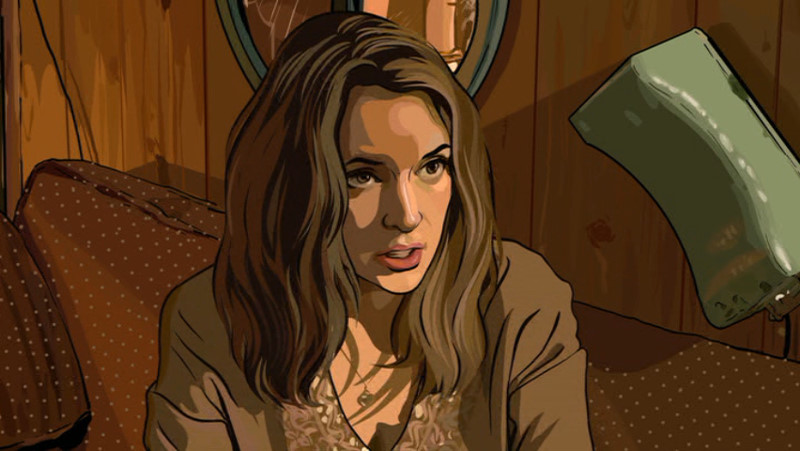


Richard Linklater is a film director and screenwriter who has directed two films that use digital film that is then animated over using interpolated rotoscope. These two films, "A Scanner Darkly" and "Waking Life" feature live actors, such as Ethan Hawke and Winona Ryder and Keanu Reeves, but are drawn over by a team of artists on each frame on the computer (rather than traced on a light box).
The aesthetics work very successfully in both films, in my opinion. "A Scanner Darkly" is a science fiction about identity and deception in a time period of a drug addiction epidemic - with both the drug and identity themes already blurred, the animated quality is rather fitting. Similarly, "Waking Life" is a philosophical film about dreams, consciousness, and existentialism. Again, due to the nature of the film's theme, the blurred reality feel is met by the strange animation.
A sort of superbaby between traditional digital filmmaking and animation, these two movies don't require artists to work from scratch, but rather adds on additional work to the already existent digital film. While animation allows artists to explore unrealistic territories in color and shape and dimension, both these films require both a sense of reality and non-reality.



New York Aquarium Video Compliation
Assignment #23: Our next class session will focus on video. As we have spoken in class, there are 2 ways of how you can approach this. The first: Find a video online that you would like to use as your template. Choose a sequence or the entire video and redo it. If you feel comfortable go ahead and create the video. Or just present your idea in next class. The second possibility: Create a video or idea of a video which consists of a single 1 minute shot that you don't have to edit or change. If you feel comfortable with the technology involved, go ahead and create the video. Or just present your idea in our next class.
The New York Aquarium sustained heavy damage during Hurricane Sandy and lost hundreds of fish, and despite immense amounts of volunteer efforts and donations, it will be long before the aquarium will be able to re-open. I made this video from a collection of clips I made during my visits to the aquarium, years before and after the storm, with inspiration from one of my favorite musical artists, Barcelona, whose beautiful music is also feature in another aquarium-related video below:
The New York Aquarium sustained heavy damage during Hurricane Sandy and lost hundreds of fish, and despite immense amounts of volunteer efforts and donations, it will be long before the aquarium will be able to re-open. I made this video from a collection of clips I made during my visits to the aquarium, years before and after the storm, with inspiration from one of my favorite musical artists, Barcelona, whose beautiful music is also feature in another aquarium-related video below:
3D Printing Artist: Olaf Diegel
Assignment #22: Research an artist who uses 3D printing creatively and blog about her/him.
Olaf Diegel is a design engineer and professor of mechtronics at Massey University in Auckland, New Zealand. He uses 3D printing to design custom manufactured guitars. The 3D printing technology that is used is called Selective Laser Sintering (SLS) and prints by spreading layers of nylon powder that are approximately 0.1mm each.
Though the rest of the guitar's hardware is just what is normally used in guitars, the 3D printed guitar body is unique since it is not solid or simply with a few holes or shapes. Instead, these 3D guitars take standard body shapes and focuses on the negative spaces created within those standard body shapes.




Olaf Diegel is a design engineer and professor of mechtronics at Massey University in Auckland, New Zealand. He uses 3D printing to design custom manufactured guitars. The 3D printing technology that is used is called Selective Laser Sintering (SLS) and prints by spreading layers of nylon powder that are approximately 0.1mm each.
Though the rest of the guitar's hardware is just what is normally used in guitars, the 3D printed guitar body is unique since it is not solid or simply with a few holes or shapes. Instead, these 3D guitars take standard body shapes and focuses on the negative spaces created within those standard body shapes.




Creativity and 3D Printing
Assignment #21: Think of possibilities of what one can do creatively with 3D printing and create a blog entry that focuses on it.
3D printing is a technology that I was first introduced to about 10 years ago, and my ideas now still coincide with my ideas then. I think that there will be a time when 3D printers will become a norm in the American household, where instead of Amazon.com shipping your products, you can buy the "blueprint" of a toy or even more advanced objects and print it. It may or may not be the replacement for teleportation, but I think it's the next closest thing to obtaining products instantly.
In terms of art, when found objects became an integral part of contemporary art, I think printed objects can take over a similar role in the future. There are already so many forms of new media art using technologies to produce pieces, how should 3D printing contribute any differently. While 3D printing artists will need technological skill to produce these objects, the next step to using 3D printing as creative expression is what comes after the printing itself - is it sculpture? is it installation? or something different all together?
3D printing is a technology that I was first introduced to about 10 years ago, and my ideas now still coincide with my ideas then. I think that there will be a time when 3D printers will become a norm in the American household, where instead of Amazon.com shipping your products, you can buy the "blueprint" of a toy or even more advanced objects and print it. It may or may not be the replacement for teleportation, but I think it's the next closest thing to obtaining products instantly.
In terms of art, when found objects became an integral part of contemporary art, I think printed objects can take over a similar role in the future. There are already so many forms of new media art using technologies to produce pieces, how should 3D printing contribute any differently. While 3D printing artists will need technological skill to produce these objects, the next step to using 3D printing as creative expression is what comes after the printing itself - is it sculpture? is it installation? or something different all together?
Wednesday, October 24, 2012
Scanning as a Creative Outlet
Assignment #16: Produce a number of 12 scans with 3 interesting materials or material groups. Let your creativity be your guide. Publish your scans on the blog one image after the next. Add a paragraph of description reflecting the specific outcome and your choices.
Wednesday, October 17, 2012
Scan Artist: Christian Staebler
Assignment #15: Research 1 artist who works with scanners/scanography creatively and make it an entry on your blog.
Christian Staebler is a French scanography artist who mainly works with materials from nature, such as leaves, flowers, insects, and animals. He creates his scan collages for layouts for books, magazines, and other print materials. He started scanning the living world outside his house, starting with his backyard, which progressed into elaborate and colorful collages.
I found his work to be particularly colorful, but hard to look at. These living things seemed odd - though photography also puts them into a still image, the scanning, on the other hand, gives them a rather fake look (like High Dynamic Range [HDR] photography today). The arrangements seem stiff to be, rather than how nature actually feels - alive and flowing. However, I also think that this way of documentation is definitely valid and successful.
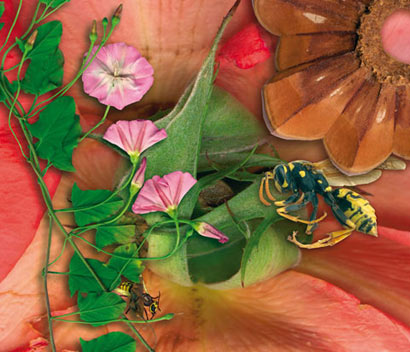
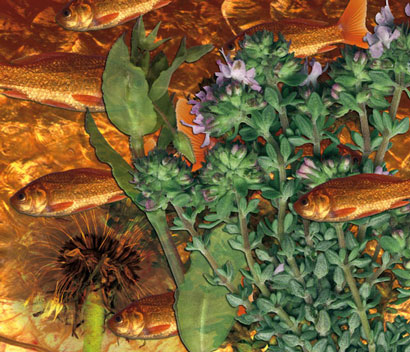
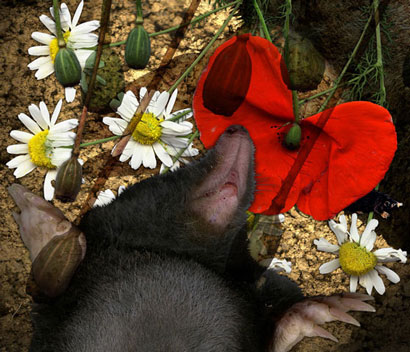
Christian Staebler is a French scanography artist who mainly works with materials from nature, such as leaves, flowers, insects, and animals. He creates his scan collages for layouts for books, magazines, and other print materials. He started scanning the living world outside his house, starting with his backyard, which progressed into elaborate and colorful collages.
I found his work to be particularly colorful, but hard to look at. These living things seemed odd - though photography also puts them into a still image, the scanning, on the other hand, gives them a rather fake look (like High Dynamic Range [HDR] photography today). The arrangements seem stiff to be, rather than how nature actually feels - alive and flowing. However, I also think that this way of documentation is definitely valid and successful.



Photography Artist:Robert Mapplethorpe
Assignment #14: Research an artist who works with photography creatively and put up a blog post.
Robert Mapplethorpe is known for his black and white portraits of celebrities, flowers, himself, and nudes. The homoerotism in some of his photography was highly controversial, especially in regards to funding for the arts, since his patrons gave him large amounts of money to buy space for him to live in and work.
I've been interested in Mapplethorpe for some time - initially due to the sexual nature of his work, from a study of visual representation of sexuality, but my interest began to grow with his work in regards to race and popular culture.
Mapplethorpe had a particular interest in photographing black males (which was some of the roots of controversy). During the time, AIDS was a up and coming issue (he, himself, died from complications related to AIDS) and his interest in nude black males only provoked the already existing rise in homophobia.
He also photographed the famous people of his time, such as Andy Warhol (below) and Patti Smith (who was at time his partner until he realized he was gay). There are many photographers who focus on celebrities today, such as Tyler Shields, but unlike paparazzi photographers, Mapplethorpe and these particular celebrity photographers set up portrait sessions rather than follow their celebrities. This implied the close relationship between the arts and popular culture.
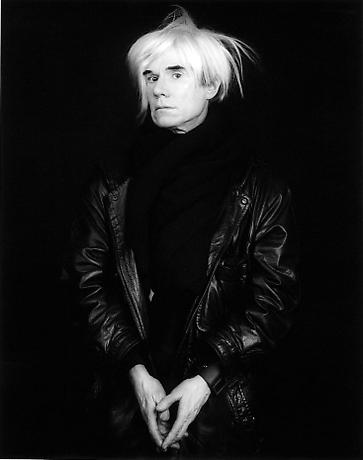
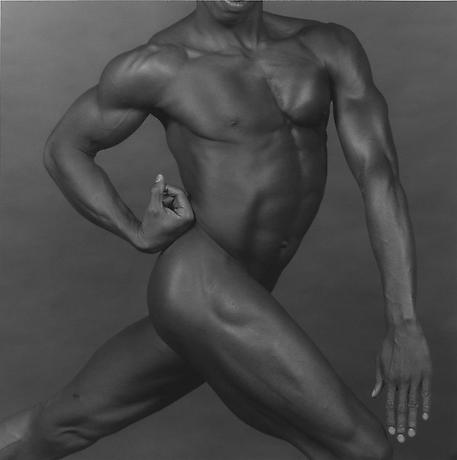
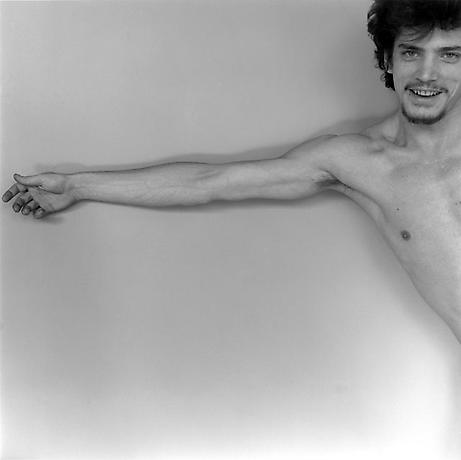
Robert Mapplethorpe is known for his black and white portraits of celebrities, flowers, himself, and nudes. The homoerotism in some of his photography was highly controversial, especially in regards to funding for the arts, since his patrons gave him large amounts of money to buy space for him to live in and work.
I've been interested in Mapplethorpe for some time - initially due to the sexual nature of his work, from a study of visual representation of sexuality, but my interest began to grow with his work in regards to race and popular culture.
Mapplethorpe had a particular interest in photographing black males (which was some of the roots of controversy). During the time, AIDS was a up and coming issue (he, himself, died from complications related to AIDS) and his interest in nude black males only provoked the already existing rise in homophobia.
He also photographed the famous people of his time, such as Andy Warhol (below) and Patti Smith (who was at time his partner until he realized he was gay). There are many photographers who focus on celebrities today, such as Tyler Shields, but unlike paparazzi photographers, Mapplethorpe and these particular celebrity photographers set up portrait sessions rather than follow their celebrities. This implied the close relationship between the arts and popular culture.



Photography and Teaching Children
Assignment #13: Think about photography for a little bit and about its materiality and the process of taking a picture. Make 3 connections to children. (I skipped the photographic lesson plan as I don't want to ask too much from you).
In a search for how to teach photography to children, I came upon several lists of "tips" for teaching children digital photography (i.e., http://digital-photography-school.com/13-lessons-to-teach-your-child-about-digital-photography; http://content.photojojo.com/photojojo-original/teaching-photography-to-children/)
Children can be easily taught to click a button, especially in digital photography, but I think it's important for children to also understand photography from a film point of view. Photography is a lot about physics as well as creativity. And while digital photography allows, as it seems, endless photograph-taking, it opens up both a venue for experimentation and laziness. Film photography, on the other hand, or teaching digital photography like it was film, allows each photograph to receive more attention - guiding children to look more rather than pushing a button seems rather important.
However, on the more positive side of digital photography, children can make lots of "mistakes" and enjoy experimentation. Allowing them to reflect on what they've just taken on a screen gives them another chance to approach a photograph differently, or for them to reach satisfaction with the first photograph.
The portability of a camera is also essential to photography. Children experience new things all the time, and because a camera can be so accessible these days, asking them to journal things that interest them is very plausible. Though writing is obviously essential to a child's education, they can learn that photography is both fun/creative and useful as a documentation tool - like a memory bank.
In a search for how to teach photography to children, I came upon several lists of "tips" for teaching children digital photography (i.e., http://digital-photography-school.com/13-lessons-to-teach-your-child-about-digital-photography; http://content.photojojo.com/photojojo-original/teaching-photography-to-children/)
Children can be easily taught to click a button, especially in digital photography, but I think it's important for children to also understand photography from a film point of view. Photography is a lot about physics as well as creativity. And while digital photography allows, as it seems, endless photograph-taking, it opens up both a venue for experimentation and laziness. Film photography, on the other hand, or teaching digital photography like it was film, allows each photograph to receive more attention - guiding children to look more rather than pushing a button seems rather important.
However, on the more positive side of digital photography, children can make lots of "mistakes" and enjoy experimentation. Allowing them to reflect on what they've just taken on a screen gives them another chance to approach a photograph differently, or for them to reach satisfaction with the first photograph.
The portability of a camera is also essential to photography. Children experience new things all the time, and because a camera can be so accessible these days, asking them to journal things that interest them is very plausible. Though writing is obviously essential to a child's education, they can learn that photography is both fun/creative and useful as a documentation tool - like a memory bank.
Grouping Photographs into a Narrative
Assignment #12: We began in class to create an interesting narrative by using your photograph as a starting point and adding 9 images from the web. As you tell your story, don't use additional captions or titles; have the images speak for themselves. Arrange your images and upload them to a Pinterest board or on your blog in the order you seem fit. If you haven't already, finish this assignment. Add a few sentences about this experience and what you were trying to achieve or were this assignment got you on your blog.
http://pinterest.com/angieartzoo/mistakes/
Rather than telling a particular story with images found online, I looked through my own 23,000+ photos on Facebook and I found photographs from the last few months that I should have deleted for a reason or another, but did not, due to "mistakes" in photography.
After putting the 10 photographs together, I began to appreciate my "mistakes" more, whether it was compositional, or a raindrop fell on the lens, or lighting problems, etc. Each "mistake" essentially had a story on its own, and became very much part of the photograph.
http://pinterest.com/angieartzoo/mistakes/
Rather than telling a particular story with images found online, I looked through my own 23,000+ photos on Facebook and I found photographs from the last few months that I should have deleted for a reason or another, but did not, due to "mistakes" in photography.
After putting the 10 photographs together, I began to appreciate my "mistakes" more, whether it was compositional, or a raindrop fell on the lens, or lighting problems, etc. Each "mistake" essentially had a story on its own, and became very much part of the photograph.
Processing an Idea from a Photograph
Assignment #11: After listening to your peers and their approaches with their image; would you want to alter/redo/change/some of your ideas now? If so, feel free to do so; indicate potential changes on your blog. Homework #5 (Assignment #9) had you come up with ideas about what you can do with your image creatively. Realize one of them and bring the output to our next class or put it up on your blog. If your idea is not feasible in the amount of time, chose another one; stay within reason.
I tried to re-create the effect that I had with my photo. I snapped different parts of a bike, as if they were mistakes in trying to capture the entire image of the bike. I played with Photoshop until I was able to recreate the image of the bike and the circular blur as well. I decided to approach an idea like this because I was curious to how a "mistake" could be intentionally approached, as a creative process.
I tried to re-create the effect that I had with my photo. I snapped different parts of a bike, as if they were mistakes in trying to capture the entire image of the bike. I played with Photoshop until I was able to recreate the image of the bike and the circular blur as well. I decided to approach an idea like this because I was curious to how a "mistake" could be intentionally approached, as a creative process.
Wednesday, October 10, 2012
Documentation Artist: Guy Delisle
Assignment #10: Research an artist who works with documentation as an artistic process.
Guy Delisle is known as a Canadian comic book author and animator.
He documented his experiences working as an animator in China (Shenzhen [2000]) and North Korea (Pyongyang [2003]) via comics. He also documented his experiences traveling in Myanmar/Burma (Burma Chronicles [2007]) and most recently, Israel (Chronicles of Jerusalem [2011]). Written originally in French, his books have been translated into many languages, including English, Polish, Spanish, Finnish, and Czech, and have been best sellers in France.
It seems as if he writes and draws and photographs about seemingly everything - the weather, the city, the politics, the culture, interesting objects, and his own presence and work, so the end result is a part-autobiographical, part-travel-journal, and part-anthropological-ethnography.
While Delisle is at location, he sketches and writes in his journals and takes photos when he can to document exact structures or objects or experiences. Though he is in "dangerous" areas, he documents the happiness of the people as it exists - the daily life, not the war or politically-torn states.
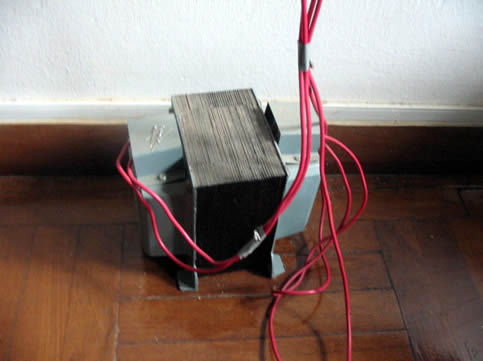
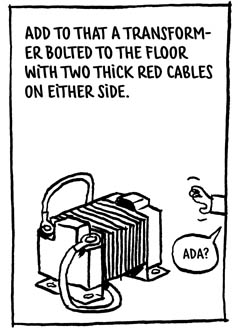

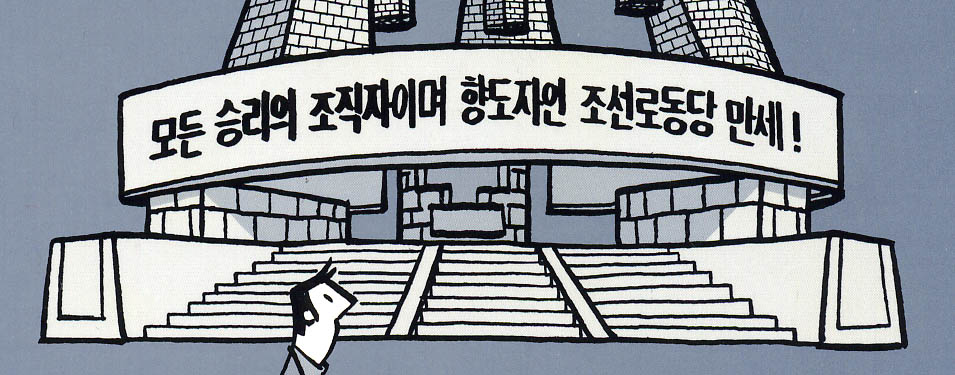
Guy Delisle is inspired by the comics he attains and artists from the places he is documenting. The following comic is from Burma:
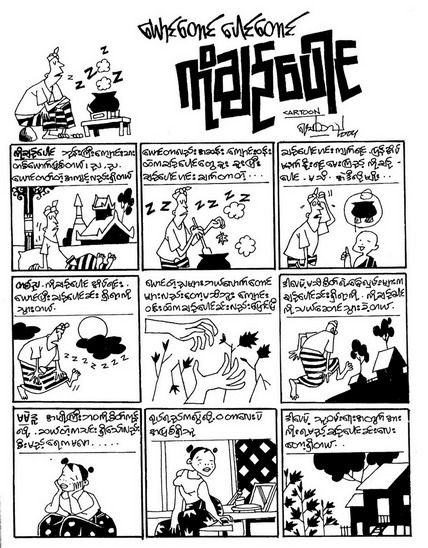
Guy Delisle is known as a Canadian comic book author and animator.
He documented his experiences working as an animator in China (Shenzhen [2000]) and North Korea (Pyongyang [2003]) via comics. He also documented his experiences traveling in Myanmar/Burma (Burma Chronicles [2007]) and most recently, Israel (Chronicles of Jerusalem [2011]). Written originally in French, his books have been translated into many languages, including English, Polish, Spanish, Finnish, and Czech, and have been best sellers in France.
It seems as if he writes and draws and photographs about seemingly everything - the weather, the city, the politics, the culture, interesting objects, and his own presence and work, so the end result is a part-autobiographical, part-travel-journal, and part-anthropological-ethnography.
While Delisle is at location, he sketches and writes in his journals and takes photos when he can to document exact structures or objects or experiences. Though he is in "dangerous" areas, he documents the happiness of the people as it exists - the daily life, not the war or politically-torn states.




Guy Delisle is inspired by the comics he attains and artists from the places he is documenting. The following comic is from Burma:

Storytelling with Photography
Assignment #9: Post the picture you took in class on your blog; write a paragraph that tells the story of this picture (what have you noticed that made you take this picture?). Come up with 2 ideas where you would like to go with this picture creatively and write them down so you can share your ideas in our next session.
I went outside with Becca H., and we were discussing where to go with the assignment, and because she forgot her ID, she had to tell the security officer that she was only stepping outside for a minute without an ID. This caught my attention - the security officer was there every day (whether it was that one specifically or another). So, I wanted to give the security booth a face, so I asked him if it was okay to take a picture of him.
In the process of stepping back and turning on the camera (switching the on switch, and rotating the lens and camera body around to the typical position), I accidentally took the picture below.
Two things came to mind after seeing this picture much later - the picture itself was an accident, and it was taken in a portrait orientation, rather than the expected landscape, also an accident.
There are a lot of accidents that happen in artmaking, but also in just about everything else. There are happy ones and disappointing ones, and in art, you choose to fix it, work with it, or toss it out altogether.
In digital photography, the interesting thing about making mistakes is that you can make "mistakes" over and over and continue to "mass-produce" new images. In Photoshop, we can hide, discolour, and orient a photograph. However, composition and perspective is an important aspect to photography and though cropping is available, composition and perspective (and focus as well) generally cannot be modified after a photograph is taken.
So how can I/we expand a photograph's composition and perspective beyond Photoshop? A photograph is a flat image, so how can we change our perspective while still working with the flatness?
I think it would be interesting to play with various ways to "display" the image, either digitally or physically, to bring out the story of the "accident."
I went outside with Becca H., and we were discussing where to go with the assignment, and because she forgot her ID, she had to tell the security officer that she was only stepping outside for a minute without an ID. This caught my attention - the security officer was there every day (whether it was that one specifically or another). So, I wanted to give the security booth a face, so I asked him if it was okay to take a picture of him.
In the process of stepping back and turning on the camera (switching the on switch, and rotating the lens and camera body around to the typical position), I accidentally took the picture below.
Two things came to mind after seeing this picture much later - the picture itself was an accident, and it was taken in a portrait orientation, rather than the expected landscape, also an accident.
There are a lot of accidents that happen in artmaking, but also in just about everything else. There are happy ones and disappointing ones, and in art, you choose to fix it, work with it, or toss it out altogether.
In digital photography, the interesting thing about making mistakes is that you can make "mistakes" over and over and continue to "mass-produce" new images. In Photoshop, we can hide, discolour, and orient a photograph. However, composition and perspective is an important aspect to photography and though cropping is available, composition and perspective (and focus as well) generally cannot be modified after a photograph is taken.
So how can I/we expand a photograph's composition and perspective beyond Photoshop? A photograph is a flat image, so how can we change our perspective while still working with the flatness?
I think it would be interesting to play with various ways to "display" the image, either digitally or physically, to bring out the story of the "accident."
Wednesday, October 3, 2012
Creative Practice vs. Documentation
Assignment #8: In order to investigate the creative abilities of new media and new media technologies, we will work on a number of actions throughout the semester. Action #1 was to bring a piece of technology into the classroom. Action #2 is to document something. This can be a creative process, an installation, an artistic practice, or an art object; try to stay with something that’s related to the arts. The documentation can be done in whichever way as long as you use a piece of technology, be it a camera, a recorder, or whatever comes to your mind. By asking you to document it, I want us to focus on the difference between creative practice and documentation. Bring your results to the next class or just add them to your blog.

Based off of "Dear Photograph" - one photograph is taken as a documentation, but the memory is revisited. I took a photograph of my painting in progress, and now 3 years later, printed that photograph and "revisited" the painting by lining it up.
"Dear Photograph" example:

Drawing/Painting on a Digital Device
Assignment #7: Create at least 1 drawing and 1 painting on either one or two of those devices: a computer, a tablet, and/or a smartphone; using a keyboard, your fingers; or a stylus. Put some time into this and see how far you can get to make this a creative outlet.
Drawn with Wacom Intuos4 Wireless Pen Tablet and Stylus in Photoshop CS5 (Windows 7).
Drawn with Wacom Intuos4 Wireless Pen Tablet and Stylus in Photoshop CS5 (Windows 7).
Painted with iPad (1st Generation) and Joysticker's Paintbrush in MyBrushes (iOS).
Wednesday, September 26, 2012
E-Etiquette
Assignment #5: Go to http://eetiquette.com and pick three select quotes to re-post on your blog.






Subscribe to:
Posts (Atom)











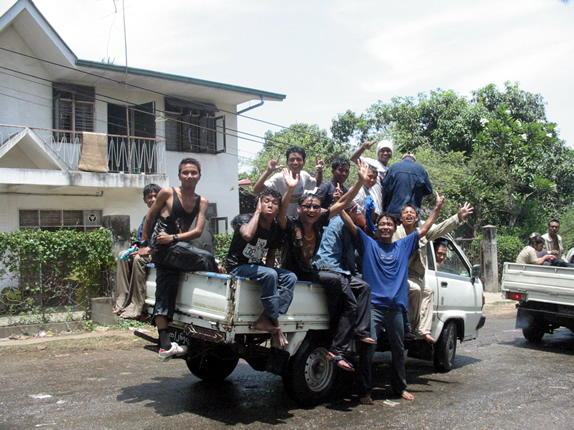
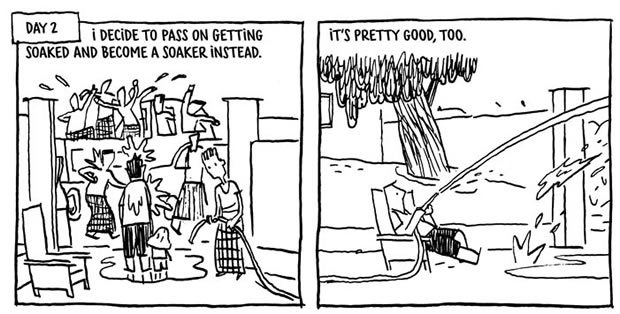

.JPG)



